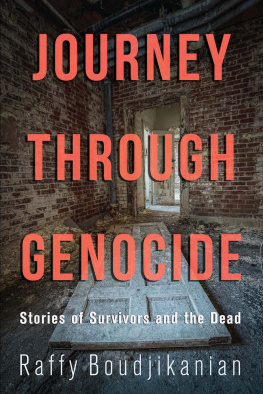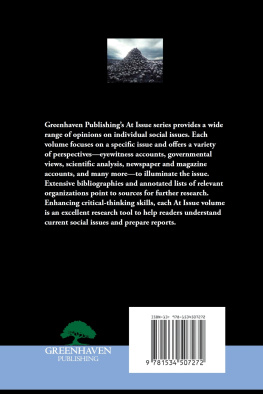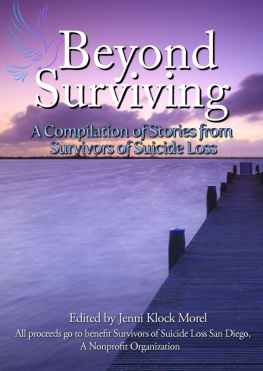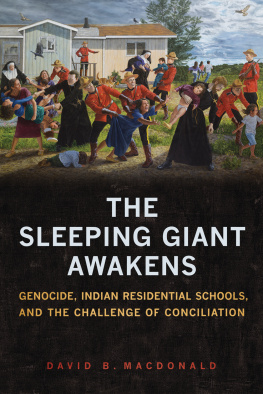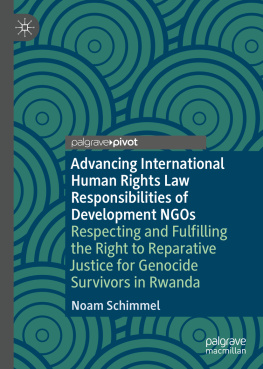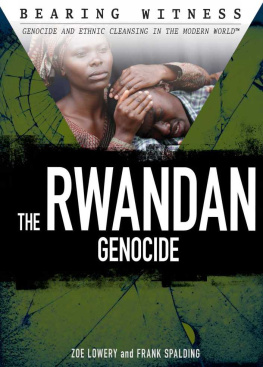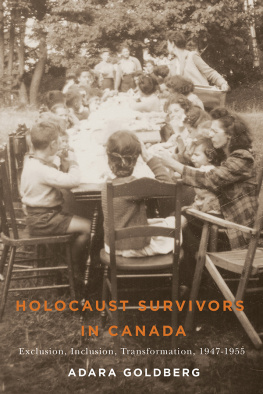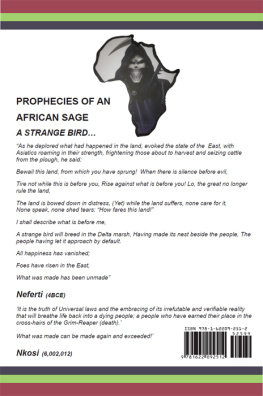An Introduction
When you are the descendant of genocide victims and survivors, genocide is not simply an abstract concept conjuring mental images of starving children or dead bodies in some faraway time and place. It is a constant reminder of what happened to your ancestors and the forces that shaped your lifes path long before you first opened your eyes.
I was born in Beirut on May 8, 1984, around 10:00 a.m., if my mothers memory serves. Third child, second son, living with my family smack-dab in the middle of almost-daily bombardments and gunfire sweeping through the country caught in a civil war the U.N. estimates killed more than 120,000 people over its fifteen-year span.
When I was around four, I found out why I was born in Lebanon. One afternoon, I caught my father in our sunlit living room reading a big, black book, its cover decorated with skulls. That kind of imagery sticks in a childs mind.
Whats the book about? I asked.
He explained, as much as a rational adult can explain, the concept of genocide to a small boy. He told me of the 1.5 million Armenians who were killed by Ottoman Turkish soldiers around 1915. My grandfather, barely older than me back then, escaped with most of his family from what is now known as eastern Turkey, what Armenians frequently refer to as historic Armenia, to Lebanon, to survive and start a new life. In comparison to many other Armenians, the Boudjikanians were lucky. My grandfather did lose his dad to the massacres, but he didnt endure the death marches through Syrian deserts that remain seared in my peoples collective memory.
Wed be made to escape in my lifetime again, of course. This time, from a war-weary Lebanon to the safety of Canada.
The situations are parallel but not quite comparable. It was not a campaign of ethnic cleansing that made my parents decide one day that enough was enough and wed be fleeing west, but the horrors of a country tearing itself apart. In fact, the strife had largely ceased by the time we did make the trip. Furthermore, our move was facilitated through a standard application for visas and waiting for an all-clear , rather than by means of a secretive escape. But, there you have it: my lifes path was shaped by forces that were around long before I was.
* * *
If you include the tribes and kingdoms that would fight among each other and eventually merge, the Armenian civilization stretches back three millennia. Empires have risen and fallen around this small nation, sometimes swallowing it whole, sometimes carving it into smaller pieces among themselves; but it has endured and evolved, with its own history and customs. Youre unlikely to discover much about it through any cursory research, though. Type the word Armenian into the worlds most famous search engine, and there is a strong chance it will helpfully suggest genocide as a first-choice completion to your query.
You see, one entity that swallowed up much of Armenia for a long period of modern history was the Ottoman Empire, from the early parts of the sixteenth century until just about its own collapse in the first couple of decades of the twentieth.
By that point, a political party named the Committee for Union and Progress (CUP), also known as the Young Turks, had wrested control from the Empires long line of sultans. The CUP was bent on seeing a version of Turkey for ethnically Turkish people from border to border. The Armenian nation was in their way, so the genocide was devised and carried out.
For the last century, Armenians have focused their public-relations efforts on pushing for international recognition of this crime against humanity, while the rest of our culture remains mostly a mystery to the world at large. Much of our unique literature is unread by a wider audience. Our famous authors are immortalized all over the modern country of Armenia in dramatic, Soviet-style statues, and their birth villages are sometimes rechristened in their names, but most of their writing is not translated into any other language. Our myths, arguably as compelling for schoolchildren as any about Herculess twelve labours, are unfamiliar in other parts of the world, never having been adapted into serialized television or Hollywood mega-productions . Sure, you can visit Yerevan, Armenias capital, and pose in front of a statue of David of Sassoon, the greatest of our mythical heroes. You can see him holding his Tour Gedzagi (The Sword of Lightning), astride his steed, Kourgig Tchalali, the legendary horse that could leap high as the sun in a single bound. But do not expect to find any plaque summarizing his tale at the public square in question.
Armenians who live in the country may get married in churches or monasteries with chapels nearly as old as the Christian religion itself; they may choose to have their children baptized in such structures, beautifully ornate buildings often nestled in picturesque mountainsides. But these, too, are not much advertised. One such monastery, Datev, is so high up a gorge that taking a rickety bus up the steep slope can feel like reaching for Heaven itself, especially on a foggy day. One slight slip-up by the driver can mean plummeting in the opposite direction instead. For those nervous about the bus ride, there is another option: a ride on the Wings of Datev, the worlds longest reversible cable car at 5,752 metres.
Another monastery, Keghart, is said to have housed both a piece of the lance that pierced the side of Jesus Christ and a fragment of Noahs ark. Carved in sheer volcanic rock, it is also home to a clear, clean stream of water rumoured to have healing capabilities.
We sing the praises of Armenian wine in our songs, but it is barely exported anywhere. The most popular Armenian brandy, Ararat, actually has uncovering the past to understand the present as one of its slogans, which, though just about abstract enough to remain obscure, surely reads more as an allusion to the genocide than to the idea of having a good time with your friends at a party.
As a non-Armenian , youre likely to experience The Lecture, the story of the genocide, if you show any curiosity about Armenian culture at all to somebody of the background. Our capacity to kill the mood in a light-hearted conversation when anyone asks a couple of questions about our origins has become a bit of a joke, though it is not a very funny one.
If you consider that the heritage of this crime against humanity is what generations of schoolchildren have grown up with since, its more sad than anything else.
Year after year, Ive had teachers at my Armenian grade/high school set aside ample class time to go over this dark history, in increasingly greater detail as we children got older, and age restrictions fell away.
Then, there are the annual bus treks to Ottawa, for commemorations and protests before Parliament Hill. When I was a child, Canada hadnt yet acknowledged the massacres as genocide.

